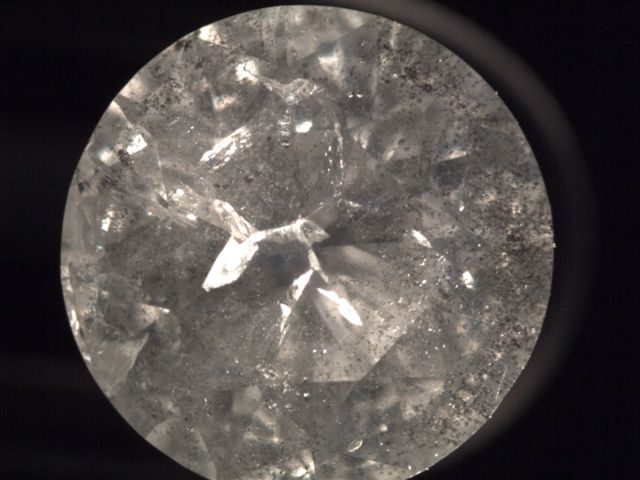A milky diamond refers to a gemstone that exhibits a cloudy or hazy appearance, which results in reduced transparency, brilliance, and overall life of the stone. This milky effect can significantly affect the diamond’s visual appeal, as it diminishes the stone’s ability to reflect light and sparkle. The term “milky” is used to describe diamonds that appear opaque or have a frosted, white haze that can obscure the clarity and sparkle of the diamond.
There are several factors that can contribute to a diamond being described as milky:
Cloudy Inclusions: The most common cause of a milky appearance is the presence of dense, white, or opaque inclusions inside the diamond, known as “clouds.” These inclusions scatter light within the stone, making it appear hazy and reducing its brilliance. Clouds are generally made up of tiny crystals of minerals or gas bubbles trapped inside the diamond during its formation. While small clouds may have little effect on the diamond’s appearance, dense or large clouds can result in a noticeable milky effect.
Strong Fluorescence: Another factor that can cause a diamond to appear milky is intense fluorescence. Fluorescence refers to the emission of a visible light when the diamond is exposed to ultraviolet (UV) light. Diamonds that exhibit strong fluorescence, particularly blue fluorescence, may appear milky or hazy under certain lighting conditions, especially in daylight or under UV light. In some cases, strong fluorescence can create a visible bluish cloudiness in the diamond’s appearance, leading to a milky look.
Grading of Transparency: The DCLA (Diamond Certification Laboratory of Australia) uses a specific grading system to evaluate diamonds based on factors such as clarity, cut, colour, and transparency. When it comes to transparency, the DCLA assesses the diamond’s ability to transmit light and its overall visual quality. A milky diamond will generally receive a lower transparency grade due to the diminished light return caused by internal inclusions, fluorescence, or other optical issues. A diamond with a reduced transparency grade will appear less vibrant and lifeless compared to a perfectly clear stone.
Other Factors: In addition to inclusions and fluorescence, the clarity and overall quality of the diamond’s cut can also influence the diamond’s transparency. A poorly cut diamond, or one with irregularities in the facets, can exacerbate the milky effect by causing light to be scattered in a way that reduces its brilliance.
Impact on Value:
Milky diamonds tend to have a lower value compared to clear diamonds because their reduced transparency results in a diminished visual appeal. The milky effect makes them less desirable for high-end jewelry, where brilliance and clarity are highly valued. However, depending on the severity of the milky appearance, some buyers may still find these diamonds attractive for specific designs or purposes, such as lower-cost pieces or designs that mask the effect with intricate settings.
DCLA Transparency Grade:
When diamonds are certified by the DCLA, one of the factors considered is the diamond’s transparency. The transparency grade of a diamond can be influenced by a variety of internal and external factors. A milky diamond, due to its hazy or cloudy appearance, would likely receive a lower transparency grade, indicating that it does not possess the ideal light return and brilliance expected from a high-quality diamond. The DCLA’s grading system provides an objective way to assess these characteristics, allowing buyers and sellers to make informed decisions about the diamond’s quality and value.

